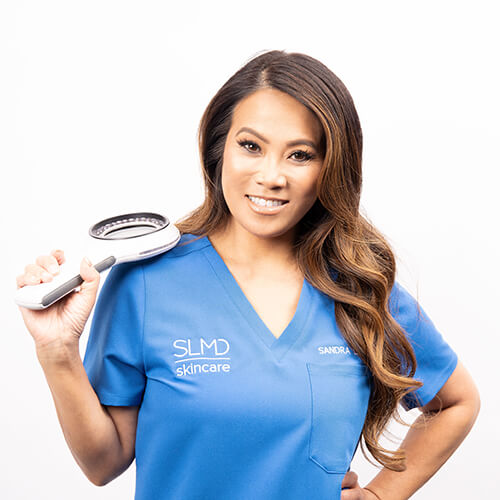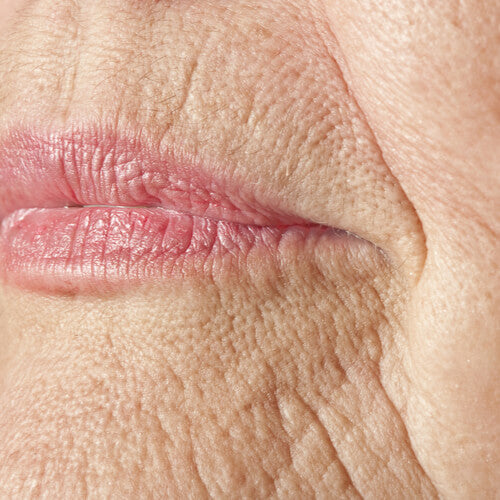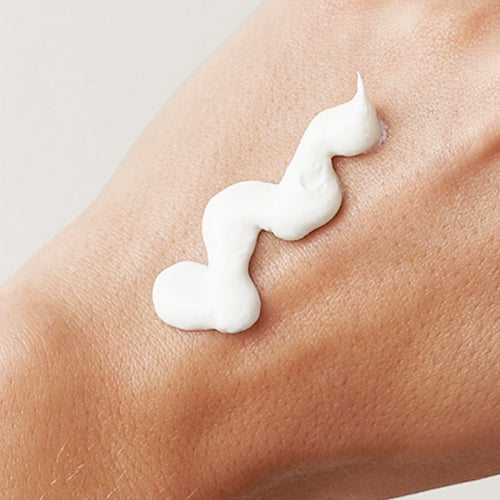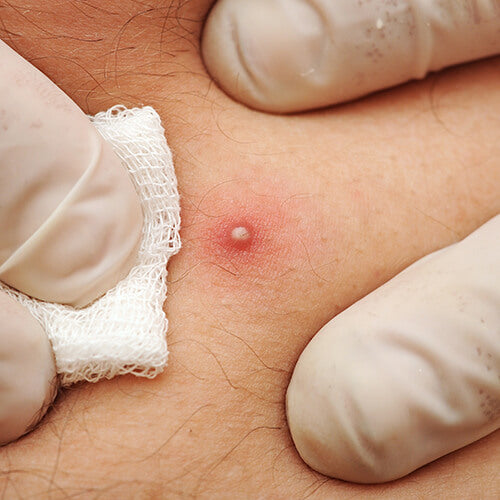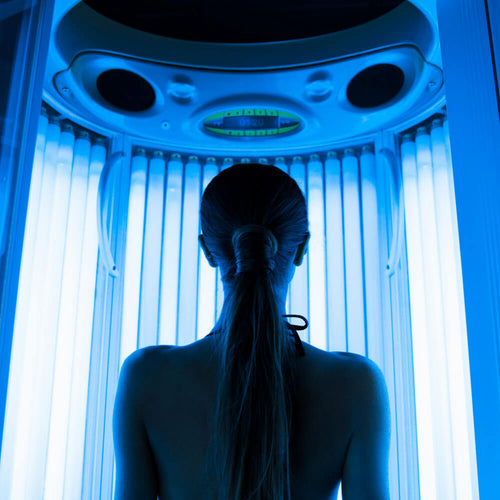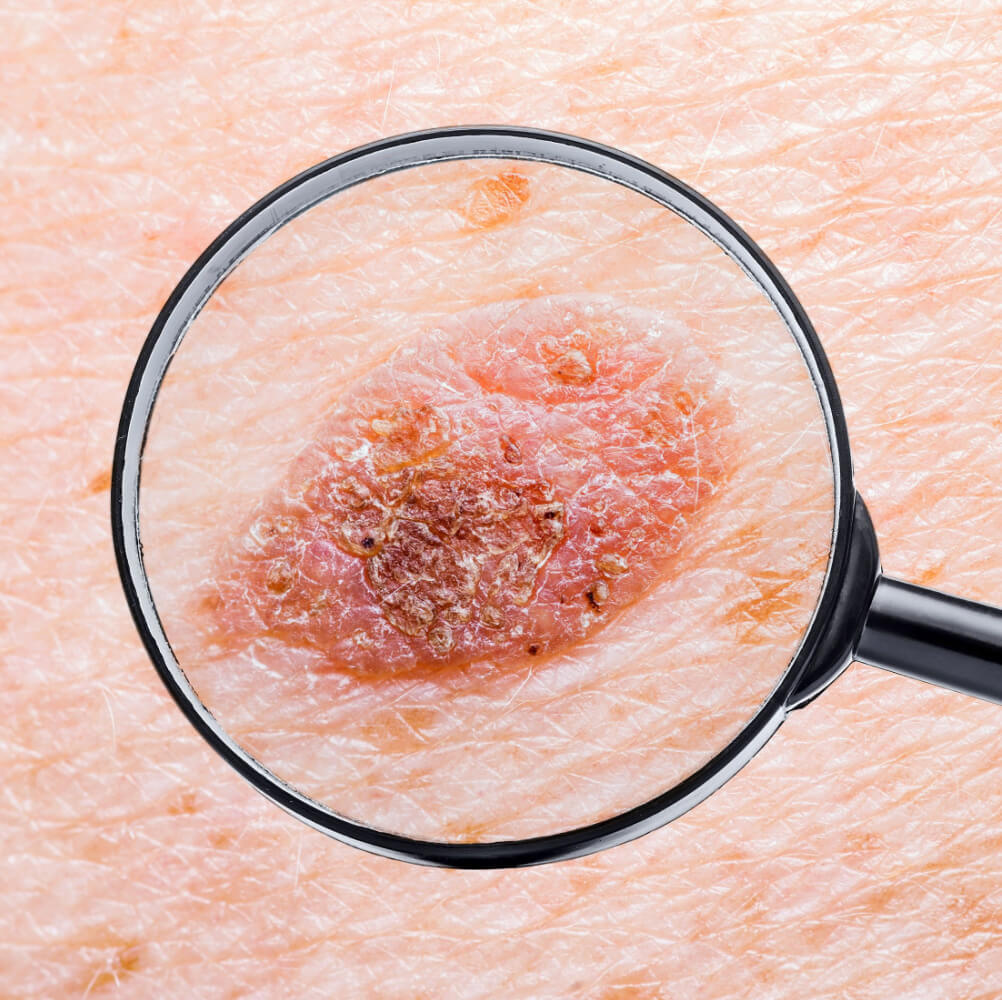
Could It Be Skin Cancer? How to Spot the Early Warning Signs
Dr. Pimple Popper breaks down the signs of skin cancer — and how to help prevent it with SPF.
Published:
3 minute read
Worried about a weird spot on your skin? You’re not alone.
Skin cancer is the most common form of cancer — but it’s also one of the most preventable. We asked dermatologist and SLMD founder Sandra Lee, MD (aka Dr. Pimple Popper) to explain how to spot early warning signs, when to see your doctor, and how smart skincare (like SPF) plays a key role in prevention.
Article Quick Links
What are the types of skin cancer?
Skin cancer falls into three main categories — each with different warning signs and risk levels. While many types are treatable when caught early, Dr. Lee emphasizes that any new or changing lesion should be evaluated by a dermatologist.
Basal cell carcinoma

This is the most common form of skin cancer. It often appears as a shiny bump or a red, scaly patch. While it rarely spreads, it can cause local tissue damage if not treated.
Squamous cell carcinoma

The second most common type, it often looks like a rough, crusty area or wart-like growth. Squamous cell carcinoma may spread if left untreated.
Melanoma

This is the most dangerous form of skin cancer. It typically begins as a new or changing mole and can spread rapidly if not caught early.
Photos are for reference only. If you're concerned about any spot on your skin, consult your dermatologist.
How to use the ABCDE method
Dr. Lee recommends regular self-checks using the ABCDE rule to help detect melanoma early:
- A — Asymmetry: one half doesn’t match the other
- B — Border: irregular, notched, or blurred edges
- C — Color: uneven shades of brown, black, or other colors
- D — Diameter: larger than 6mm (about the size of a pencil eraser), though melanomas can be smaller
- E — Evolving: any change in shape, size, color, or new symptoms like bleeding or itching

Tips to prevent skin cancer
UV radiation is the top risk factor for skin cancer — and that means prevention starts with sun protection. According to Dr. Lee, these steps can make all the difference:
- Use broad-spectrum sunscreen daily. Apply SPF 15 or higher every morning, even when it’s cloudy. Look for lightweight, non-comedogenic formulas (like SLMD Daily Moisturizer with SPF 15).
- Reapply regularly. Sunscreen breaks down over time and with exposure to sweat or water. Reapply at least every 2 hours during prolonged sun exposure.
- Avoid peak sun hours. Stay in the shade between 10 a.m. and 4 p.m. — when UV rays are strongest.
- Wear protective clothing. Choose wide-brimmed hats, UV-protective sunglasses, and long sleeves.
- Skip tanning beds. Artificial UV radiation significantly increases your risk of all types of skin cancer.
- Get regular skin checks. Dermatologists recommend full-body skin exams annually, or more often if you’re high risk.
Dr. Lee's tip: “Don’t forget spots like your ears, lips, and the backs of your hands. These areas get a lot of sun exposure — and often get overlooked when applying sunscreen.”
FAQ: Skin cancer signs & prevention
Q: What does skin cancer look like?
A: It depends. Basal cell carcinomas may be shiny or pearly, squamous cell carcinomas look rough or crusty, and melanomas often resemble irregular, changing moles. When in doubt, see a dermatologist.
Q: How can I tell if a mole is dangerous?
A: If it’s new, changing, or matches one of the ABCDE warning signs, get it checked. It’s always better to be safe.
Q: Can skincare help prevent skin cancer?
A: Yes — wearing daily SPF is one of the best ways to prevent UV-related skin damage that can lead to skin cancer. Look for dermatologist-recommended options like SLMD Daily Moisturizer with SPF 15.
Q: Is skin cancer treatable if caught early?
A: Absolutely. Most skin cancers, including melanoma, have high survival rates when diagnosed and treated in the early stages.

Dr. Lee's Last Word
Skin cancer can be a scary topic for people — but when you know what to look for, and how to protect yourself, you won’t have to worry. ALWAYS wear sunscreen, examine your skin regularly, and go see your dermatologist on a regular basis to get checked.




